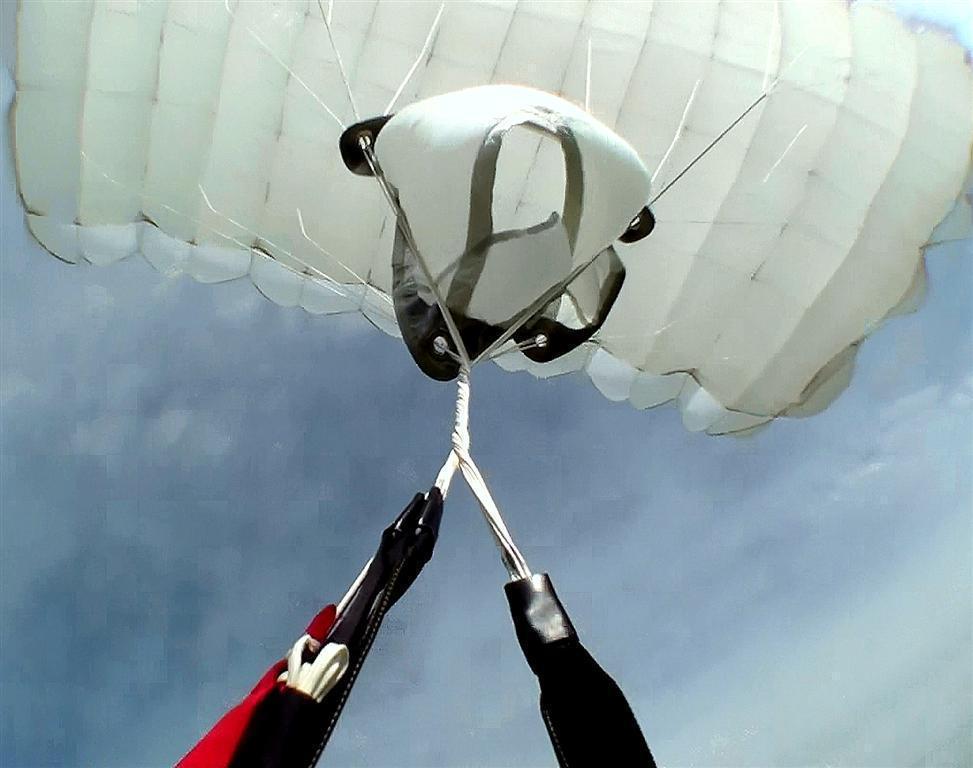Leaderboard
-
in Posts
- All areas
- Adverts
- Advert Questions
- Advert Reviews
- Videos
- Video Comments
- Blog Entries
- Blog Comments
- Images
- Image Comments
- Image Reviews
- Albums
- Album Comments
- Album Reviews
- Files
- File Comments
- File Reviews
- Dropzones
- Dropzone Comments
- Dropzone Reviews
- Gear
- Gear Comments
- Gear Reviews
- Articles
- Article Comments
- Article Reviews
- Fatalities
- Fatality Comments
- Fatality Reviews
- Stolen items
- Stolen item Comments
- Stolen item Reviews
- Records
- Record Comments
- Record Reviews
- Help Files
- Help File Comments
- Help File Reviews
- Events
- Event Comments
- Event Reviews
- Posts
- Status Updates
- Status Replies
-
Custom Date
-
All time
January 20 2016 - August 17 2025
-
Year
August 17 2024 - August 17 2025
-
Month
July 17 2025 - August 17 2025
-
Week
August 10 2025 - August 17 2025
-
Today
August 17 2025
-
Custom Date
05/09/2024 - 05/09/2024
-
All time
Popular Content
Showing content with the highest reputation on 05/09/2024 in Posts
-
3 pointsI made one at a Confederate air show when I had 30 or so jumps; using a friend’s cheapo. We were the landing on Normandy Beach. Wendy P.
-
3 points
-
2 pointsYou may be overthinking this. A more likely scenario is that Musk came back after months of being at Twitter/X, talked to Tinucci, told her that he wanted her to fire about half her team, she said no, so he fired her and everyone on the team to make an example of them. That way no one else would ever try to talk back to him. No long term strategy. No tradeoffs between charging and vehicle work. Just him being the most excellent, fast-on-his-feet titan of industry the world has ever seen (in his mind.)
-
2 pointsHi Steve, Re: he created the acclaimed Racer canopy system Looks like some whuffo at PIA. Jerry Baumchen
-
2 pointsParachute Industry Association's Post John Sherman, a significant figure in the world of skydiving and a cherished member of the community, passed away at 85. Renowned for his contributions to the sport, John played a crucial role in advancing skydiving technology and safety. John's skydiving journey was defined by his unwavering dedication to enhancing the sport. As the founder of Jump Shack, he created the acclaimed Racer canopy system, setting new benchmarks for safety and reliability. This innovative system has earned widespread respect and use within the skydiving community. Beyond his technical achievements, John was celebrated for the deep bonds he formed within the community. Friends and fellow skydivers often commemorated his milestones, reflecting on their shared adventures and the lasting impact he had on their lives. John Sherman's legacy endures through the numerous skydivers who rely on the systems he developed and the safety standards he championed. He will be profoundly missed by all who knew him and by the many who benefit from his life's work.
-
1 pointSeriously? She had the biggest case in history with an airtight case and she really needed to hire her fuck buddy at a huge payday because she could? Hero to zero just that fast.
-
1 point
-
1 pointI don't think Tesla has ever really been a car company under Musk. I believe it is much more a software company. There is nothing "cutting edge" about Tesla's on the automotive side.
-
1 point
-
1 pointHey, we’re pretty old here. Anyway, Murder, She Wrote is on right after, and that Jessica Fletcher is pretty hot! Wendy P.
-
1 pointOr....you could just check the actual Skydive Perris FB page where they have the details posted. Just sayin' https://www.facebook.com/skydiveperris1
-
1 pointThere's also a post in the wingsuit forum that they'd be manifesting today (post said 'tomorrow', written yesterday)
-
1 pointDefinitely agreed there. The correlation could be education -> higher income -> lower birthrate. It could also be reverse causative - girls with the freedom to GET an education might also have the freedom to decline sex (or insist on birth control.) However, at least two studies I've seen shows that a drop in birthrate follows an educational push by 2-3 years, suggesting that it's the education that (directly or indirectly) causes the decline in birth rate. And in any case, I like the approach because it accomplishes several things at once - reducing population, improving child outcomes AND educating women.
-
1 pointAs always, your ability to use hundreds of words to say nothing is unrivaled. You want to both deny the existence of actual data when presented, and also claim that it's heretical to ask for data.
-
1 point
-
1 point(Warning - long) Winsor recently refloated the always popular nuclear-is-expensive-because-of-those-goddamn-hippies argument. Since he's not reading my posts any more, and since that's not relevant to the woke-bashing that's going on in that thread, I thought I'd break it out into a separate thread. First off, of course there is an element of cost associated with protests. When people don't like nuclear power (or aviation, or skydiving, or drag queens, or whatever) they protest, and those protests invariably make it more difficult/expensive to do whatever those people wanted to do initially - through demanding more regulation, or lobbying to deny permits, or promoting the bad over the good. In the case of nuclear power, however, that has very little to do with the rising costs. As a pilot and a skydiver, one thing I learned early on is that most aviation regulations were written in blood. The FAR that requires pilots to check the weather before they take off if they are flying to a different airport? That's not there because "bushy tailed Liberal Arts types in Boston/Cambridge" hated airplanes and wanted to screw up aviation. They are there because of the deaths of pilots who were surprised by weather after they took off. There are similar reasons for many of the regulations involved with nuclear power. The limits for worker exposure? That's not there because scaredycat liberals want to shut down nuclear power. That's because early on several people were injured and killed by radiation from poorly designed experiments and reactors. The Demon Core, for example, killed two people working with it. At that point, the risks of gamma radiation were known, but no one had been exposed to a fatal dose of neutron radiation before - something you can only get from a nuclear chain reaction, or via a very complex sort of particle accelerator. After those two deaths, more work was done on neutron radiation risks, and new limits were put in place. More regulations! Side note here - the reason most nuclear reactors are possible at all is due to a quirk of physics called "neutron cross section." It's basically the probability of a neutron hitting the nucleus of a fissile atom. Einstein's work made it clear that the slower the neutron, the more likely it was to hit that nucleus. This is important because "prompt criticality" - the sort of chain reaction we all learned about in school, and how nuclear bombs detonate - is VERY hard to regulate, since the reaction waxes and wanes over the course of hundreds of microseconds, too fast for humans to reliably control (as the physicists working with the Demon Core learned to their dismay.) However, it is possible to design nuclear reactors that cannot go prompt-critical, and can only reach criticality with delayed, or thermal, neutrons. These are neutrons that pass through a moderator (like water) and are slowed, as well as neutrons that are natually emitted from fission, just more slowly. This allows design of reactors with power time constants of seconds or tens of seconds, which makes regulation via control rods possible. Even better, if they lose their moderator (i.e. they lose coolant) the reaction slows automatically. In fact, if the reactor even just gets too hot and boils the water, the voids in the water moderator automatically reduce power generation (i.e. it has a "negative void coefficient.") This gave early reactor designers perhaps a bit too much confidence in the inherent safety of nuclear power. As people started working on reactors for power in peacetime, we saw some of those irrational emotion driven types Winsor was referring to in his post - but initally they were on the side of nuclear power. Nuclear power was so safe, easy and efficient, according to Atomic Energy Commission Chairman Lewis Strauss, that "it is not too much to expect that our children will enjoy in their homes electrical energy too cheap to meter." He saw so much of the promise of nuclear energy (both fission and fusion) and so little of the drawbacks that the future looked rosy indeed. Turns out, though, nuclear power is hard to do well. For example, if there is a LOCA (loss of coolant accident) in water-moderated reactor, the chain reaction does indeed stop. But the fuel is now full of short lived isotopes due to the neutron bombardment during operation, and those isotopes also decay and release neutrons. Not enough to sustain a chain reaction, but enough to cause additional fission and a LOT of heat. So although the reactor has technically shut down, it will still happily melt into a puddle of spent nuclear fuel, nuclear waste, moderator and steel. And it's hard to keep a reactor full of that stuff safe. And reactor designers started discovering this almost immediately. In most parts of the world, those designers have been very lucky that their mishaps have, for the most part, not resulted in large public health threats or loss of life. The first meltdown occurred at reactor EBR-1 in Idaho in 1955. This was a breeder reactor, so different design and different coolant, but same basic idea. A power excursion caused a partial meltdown, but cooling was restored and the core solidified before anything worse happened. The next occurred at the same facility, but in a different reactor - this time an experimental boiling water reactor. It was designed to not go prompt-critical for all the reasons listed above. However, when a technician removed a single control rod from the reactor, it did indeed go prompt-critical. Fortunately the core disassembled itself before nuclear weapon yields were reached, but the power excursion (20 gigawatts in a reactor designed to handle 3 megawatts) caused an explosion that killed three men in a fairly gruesome fashion. How could this have happened? This reactor was designed to be SAFE! It could not go prompt critical! Turns out two factors allowed this. One, some of the neutron poisons inside the reactor (that reduce reactivity) had corroded and flaked off. Two, it turns out that it takes water some milliseconds to boil, and this event happened in microseconds, so the voids could not form fast enough to shut down the reaction. Lesson learned. More regulation of nuclear power plant operation. In 1977, the nuclear reactor at the Millstone Nuclear Power Plant had its coolant level drop while the reactor was powered down, exposing the fuel elements to air (actually steam.) A hydrogen explosion occurred, which damaged the reactor and seriously injured one worker. How could this have happened? There's no hydrogen in a reactor! Where did it come from? The hot fuel elements, clad in zirconium, reacted with the steam to generate the hydrogen. Lesson learned. More regulation of nuclear power plant operation. Then Chernobyl happened. Fortunately for us the RBMK reactor is so different from US designs that a similar accident almost certainly can't happen here. But again the accident was due to something that no one had considered - that there is an operating regime for a reactor where poisons build up so quickly that it shuts down the reactor, and when they burn off (as they do eventually) then the reactor can restart so violently that it, again, goes prompt critical. So probably no effect on US reactors; ours can't go prompt critical. Although we initially thought the same thing about the SL-1 reactor in Idaho. Lesson learned. This time, no new regulations for the US. There are about a dozen of these. Three Mile Island, the most visible US incident, was the result of two mechanical failures and three coincident operator errors. And despite all the reassurances from the utility, the incident came very close to a containment breach - most of the core did in fact melt down, and a lot of it ended up on the bottom of the vessel. During the investigation, it was discovered that valves to the emergency feedwater supply were closed and never opened, there was no clear indication on the reactor status panel that the PORV was stuck open, and an operator actually shut off the emergency high pressure injection system. So failures of training, equipment and instrumentation. Lesson learned. More regulation of nuclear power plant operation. Then outside the US came Fukushima. A textbook case of how to shut down a nuclear reactor in an emergency, and everything looked good. But then a tidal wave damaged - not the reactor, not the control room, but the power lines and the generators that provided cooling water for the reactors when shut down. And THEY melted down. So failure to take into account protection of the entire plant - not just the reactor. Lesson learned. More regulation of nuclear power. These new lessons are why it's so hard to build new nuclear power plants. Recently the first nuclear reactor in decades opened at the Vogtle facility in Georgia. This was a simplified Gen IV design that's referred to as "walk-away safe" - no power needed to cool the reactor after an emergency shutdown. It was so simple that an early ad from GE for the reactor's original design touted "first concrete to fuel load in 36 months." From the beginning of the planning to the first operation took 20 years and came in $20 billion over budget. No protesters, just contractors screwing up, companies folding, and the usual very high level of quality required at a facility designed to safely contain a nuclear chain reaction. I keep hoping that, someday, we will get a Gen IV reactor design (or, heck, even a fusion reactor) that does indeed meet the promise made by Strauss all those years ago. What keeps us from getting there is not those goddamn hippies, and it's not evil liberals in suits toting briefcases. It's the fact that nuclear power is hard to do well, and we as a society have (wisely) demanded that it's done right.
-
1 pointIt may be long, Bill. but it's a very informative read. Thank you.
-
1 pointArizona legislators do the right thing. Even two Republican state senators found a backbone.
-
1 pointLate term abortions done for shits and giggles do not happen so going there is going nowhere. Nor is the decision made by a back room coin toss. I can hardly think of a more serious, weighty, and difficult decision to be made. As such, it must be made without any interference by any organization and only by the woman and her doctors. What that means is that I would always err on the side of the chance for abortions being made in error or owing to bad medical advice and not at all owing to some arbitrary point in time you and I agreed upon for what can only be seen as specious reasons.
-
1 pointThose are the last words before going full Ivermectin.
-
1 pointWhy should we tolerate any politician who is a proven prolific liar, a proven rapist, a proven adulterer, an admitted sexual predator, and a proven fraud?
-
1 pointAnd the marks keep sending him money: NYT: How Trump Moved Money to Pay $100 Million in Legal Bills The remarkable sum means that Mr. Trump has averaged more than $90,000 a day in legal-related costs for more than three years — none of it paid for with his own money. Do you think the fool has ever considered how much more money he would have if he just stopped committing crimes, so he didn't need to spend it all on lawyers?
-
1 pointFunny how these conservatives who are so distrustful of government are all in favor of government having control of womens' bodies and government telling people who they may or may not love.
-
1 pointTrump needs to be held accountable for his crimes. Allowing him to be free from any consequences for his behavior is far more dangerous. What, exactly, is the 'threat to democracy' that is present by how he's being opposed? Presidential immunity? Please. As was noted in the SC arguments, if that was a thing, Biden could have Trump (or anyone) murdered without consequences. The idea that "all men are equal under the law" would be shit on. 14th Amendment issues? Again, please. There have been a number of Constitutional scholars who have stated pretty clearly that Trump should be barred from office for the Jan 6 insurrection attempt. Scholars from all political sides. The ones who are the REAL threat to democracy are the Rs who are trying incredibly hard, with zero success to impeach Biden. Every charge they've tried has fallen to pieces when closely examined. Just about everything has been exposed as a Russian lie. Seen elsewhere: Either Biden is so good at being a criminal that the Rs can't prove their charges, or the Rs are so incompetent that they can't provide any evidence of 'all this illegal activity'... Or it's all bullshit.
-
Newsletter

.thumb.jpg.4bb795e2eaf21b8b300039a5e1ec7f92.jpg)









